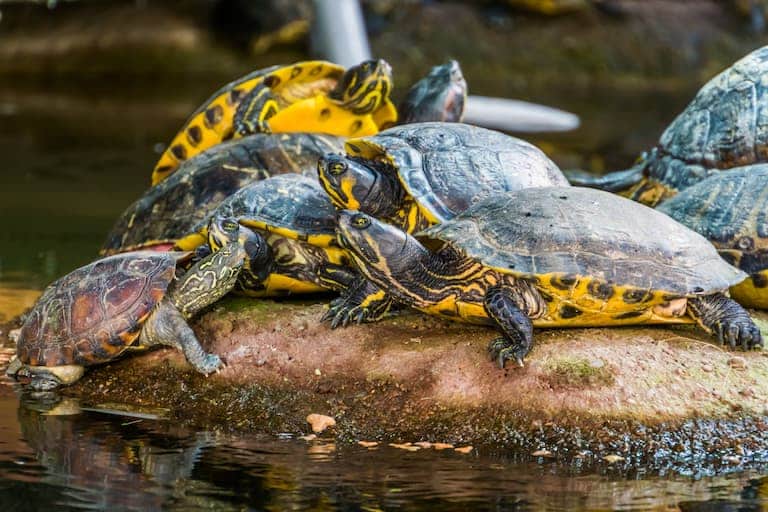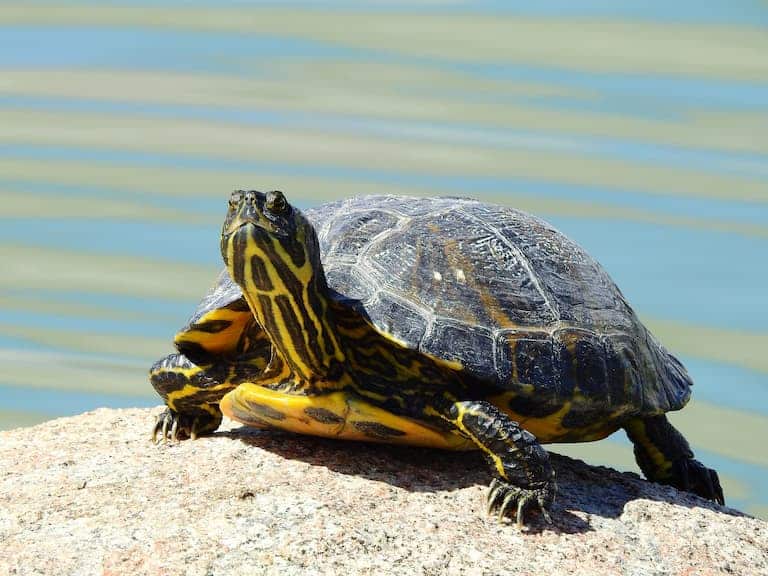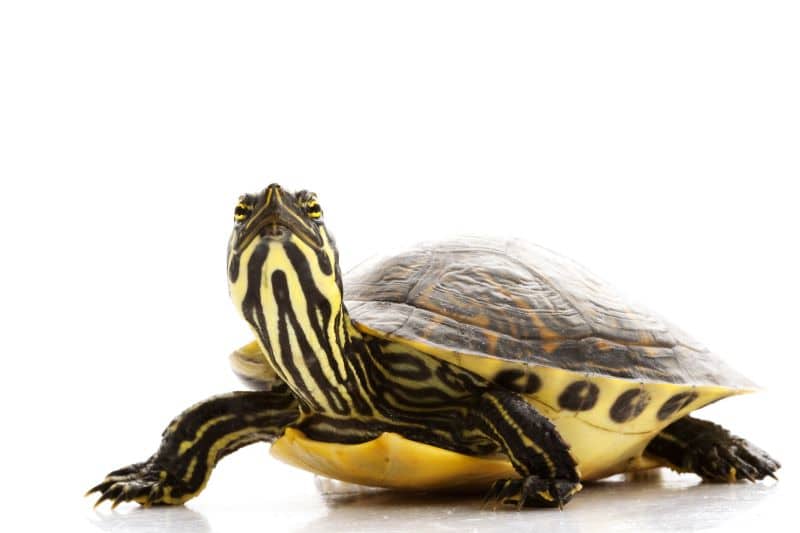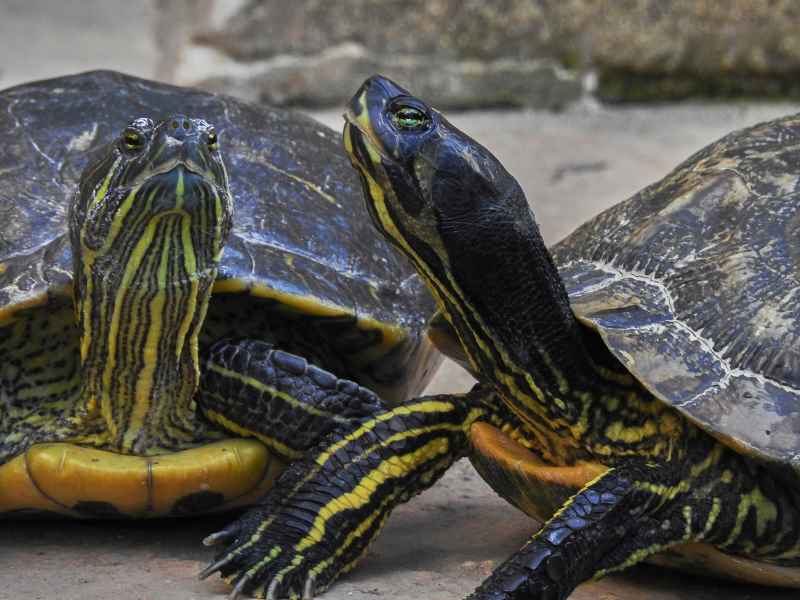All About Yellow-Bellied Slider Turtle Poop
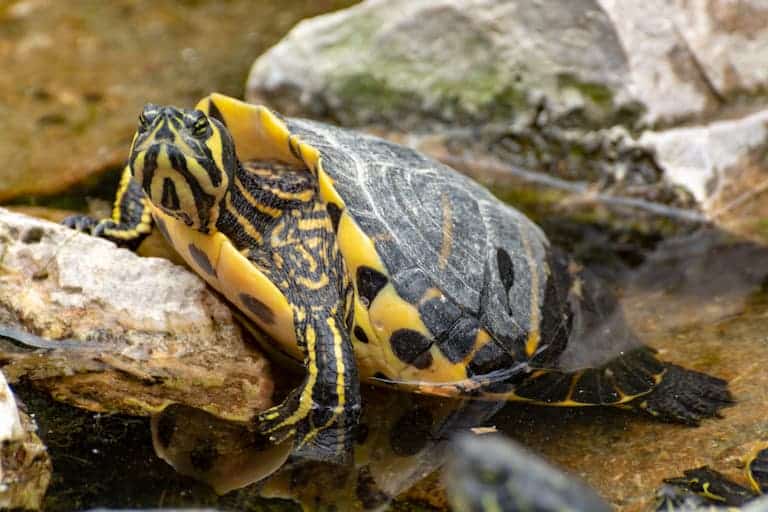
If your turtle shows constipation or the opposite: pooping too much, it can cause serious concern. Irregularity is often a sign of a more serious underlying condition, so it’s essential to understand the reason behind your turtle’s abnormal pooping.
Yellow-bellied slider turtle poop should be brown or green, slightly hard, and smell neutral. If your yellow-bellied slider poops too much and shows signs of diarrhea, internal bleeding, or infection, you must promptly take them to the vet.
This article will share how to identify turtle poop and address diarrhea and constipation issues. Learn more about turtle poop and when to consult a vet!
Contents
How Often Do Yellow-Bellied Sliders Poop?
The frequency of a turtle’s pooping relies on the turtle’s age. Healthy adult turtles will poop about two to three times a week. Hatchling and juvenile turtles will poop once a day.
An adult turtle’s pooping depends on many factors aside from age, such as weight, sleep cycle, and diet. Turtles also require water to poop, just as they require water to eat and digest. Pooping after eating can take anywhere from five minutes to an hour.
Because turtles need water to poop, you will need a quality filter to clean the water.
Why Pooping So Much?
If your yellowed-bellied slider is pooping too much, it probably has diarrhea. Diarrhea is a loose, watery poop that can happen two to three times a day, an alarming amount of poop for a turtle!
Here are the causes of turtle diarrhea:
- Parasites. Alarmingly, your turtle may have parasites. If your yellowed bellied has internal parasites, there will be signs of them in the turtle’s poop. Your turtle will become lethargic in severe instances, and its shell will soften and change color. Take a poop sample to a vet to determine if your yellowed bellied has internal parasites.
- Poor Diet. If your turtle isn’t getting the proper nutrition, it may result in diarrhea. Diarrhea is typically a symptom of a vitamin A deficiency. Turtles that eat too many treats, such as fruit, may also develop diarrhea.
- Infection. Diarrhea is often a sign of infection. Because yellow bellies are aquatic, fungal infections are common. If not treated, they can lead to respiratory problems and shell rot.
If your yellow-bellied slider turtle shows signs of diarrhea, you must take it to a veterinarian specializing in exotic pets. Diarrhea is not an illness you can treat at home! Also, remember to take a poop sample so the vet can analyze it.
Why Not Pooping Enough?
If your turtle isn’t pooping enough, there are two likely reasons: constipation and rock ingestion. Thankfully, constipation isn’t common in slider turtles, but rock ingestion is relatively common due to yellow-bellied sliders’ aquatic environment.
Rock Ingestion
Also known as impaction, rock ingestion happens when a turtle accidentally eats a rock or a piece of the substrate, and its digestive system becomes blocked. Impaction is common in aquatic turtles because their tank environments often include small pebbles and substrate bits that are easily swallowed by accident alongside their food.
While it’s common for turtles to accidentally eat rocks and substrate, it becomes a serious issue when they eat enough to become impacted. However, it could die if the turtle regularly eats rocks and substrate.
You will know your turtle is impacted if you attempt constipation remedies that don’t work. Your turtle will also become sluggish and hide much more than usual.
If your turtle has swallowed something too big to pass, you must take it to a vet for an x-ray. You can also give your turtle a few drops of mineral oil (in small amounts), but don’t try to force it to eat if it doesn’t want to.
To prevent impaction, use flat rocks at the bottom of their tank instead of small pebbles.
What Color Should Turtle Poop Be?
Turtle poop should be brown or green and solid, not liquid or mushy. If a turtle’s poop is any other color, it could indicate a severe condition (though not always).
So, let’s look at the most common turtle poop colors and identify the causes of discoloration:
Black Poop
If your turtle’s poop is black, it could signify internal hemorrhaging. In other words, your turtle is bleeding inside, and the blood has turned its poop black. Internal bleeding can happen if your turtle ingests something sharp, like a rock or a stick, and the foreign object cuts them inside.
Internal bleeding is a severe condition; your turtle must see a vet immediately if its poop is black. Though it’s possible your turtle’s poop changed color for a temporary, benign reason, it’s better to be safe than sorry.
White Poop
Thankfully, white poop is entirely harmless and usually happens due to urates, high salts, and the ion from uric acid. Like most reptiles, yellow-bellied slider turtles will excrete dry, somewhat hard acid urates, which have crystallized before leaving the cloaca. These “crystals” make your turtle’s poop hard and white.
Where Do They Poop From?
Yellow-bellied turtles poop from their cloaca. The cloaca is an orifice for urination, reproduction (laying eggs), and excretion. For this reason, a turtle’s poop can sometimes be mistaken for diarrhea when it’s just urine.
However, it could prove fatal if a yellow-bellied turtle’s cloaca becomes impacted.
Do They Poop When They Are Scared?
Yellow-bellied sliders don’t poop when scared, but they will poop or pee on you when tired of being handled. It’s a somewhat mischievous way of encouraging you to put them down again.
So, if you are handling your turtle and get a poop surprise, you should probably put it back in its enclosure.
Does It Smell Bad?
Turtle poop doesn’t smell bad. Normal, healthy turtle poop has a neutral, almost plant-like smell due to its diet. If a turtle’s poop has a foul odor, it could be a symptom of a severe illness.
So, if you notice any odd odors coming from your turtle’s enclosure, it should be a cause for concern. Turtle poop isn’t noticeably bad-smelling if your turtle is healthy.
Conclusion
In conclusion, a turtle’s poop comes from its cloaca. Turtle poop should be healthy green or brown, but white is harmless. If your turtle shows signs of impaction, constipation, or internal bleeding, get it to a vet immediately!
